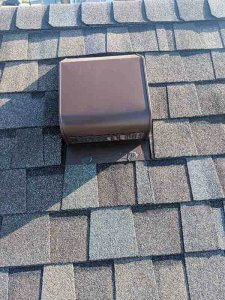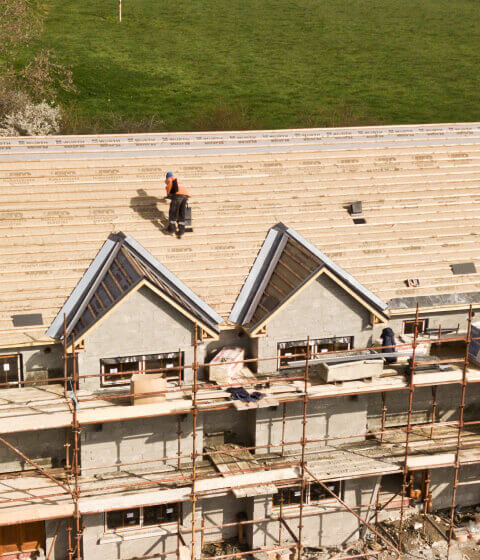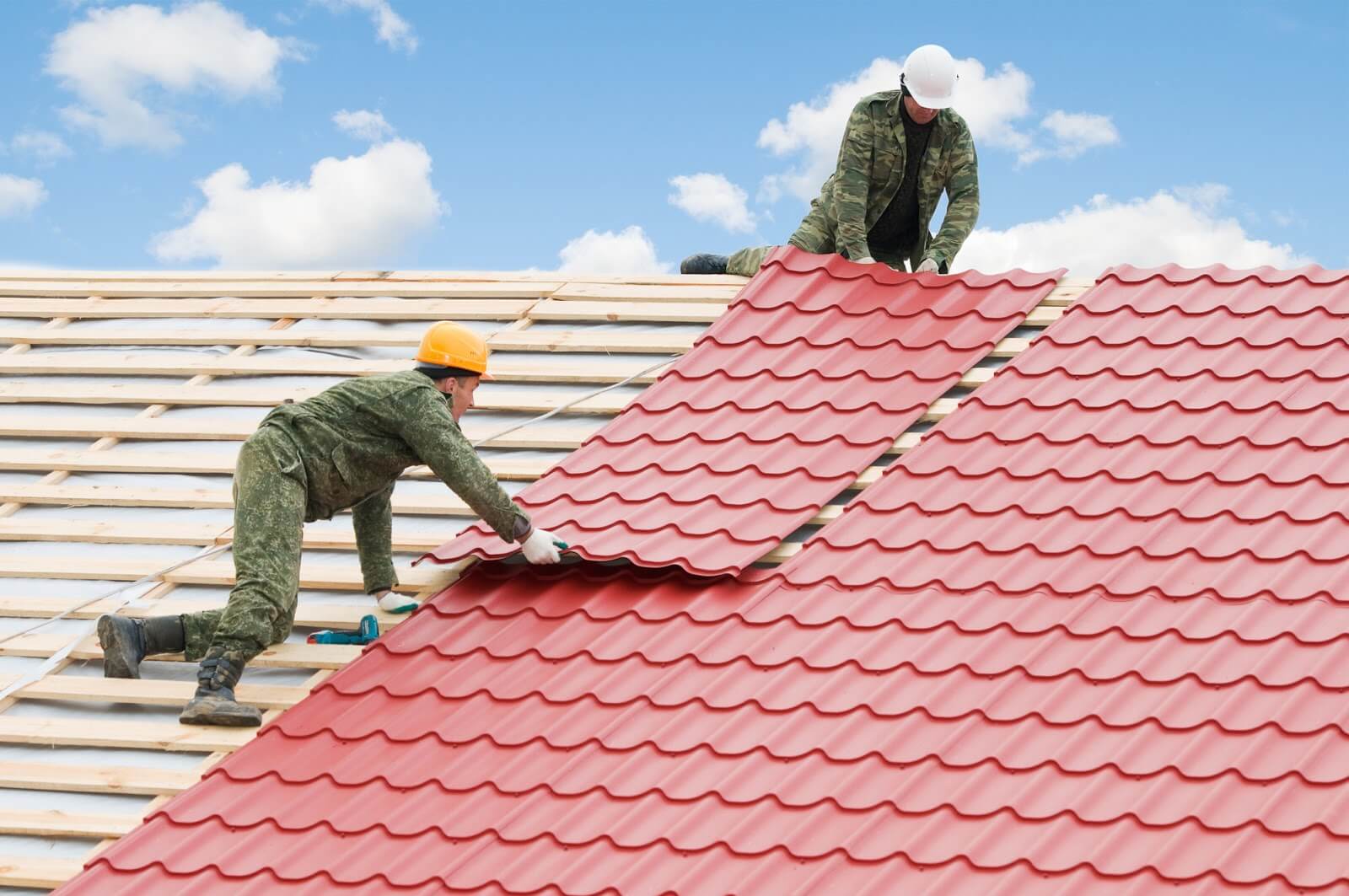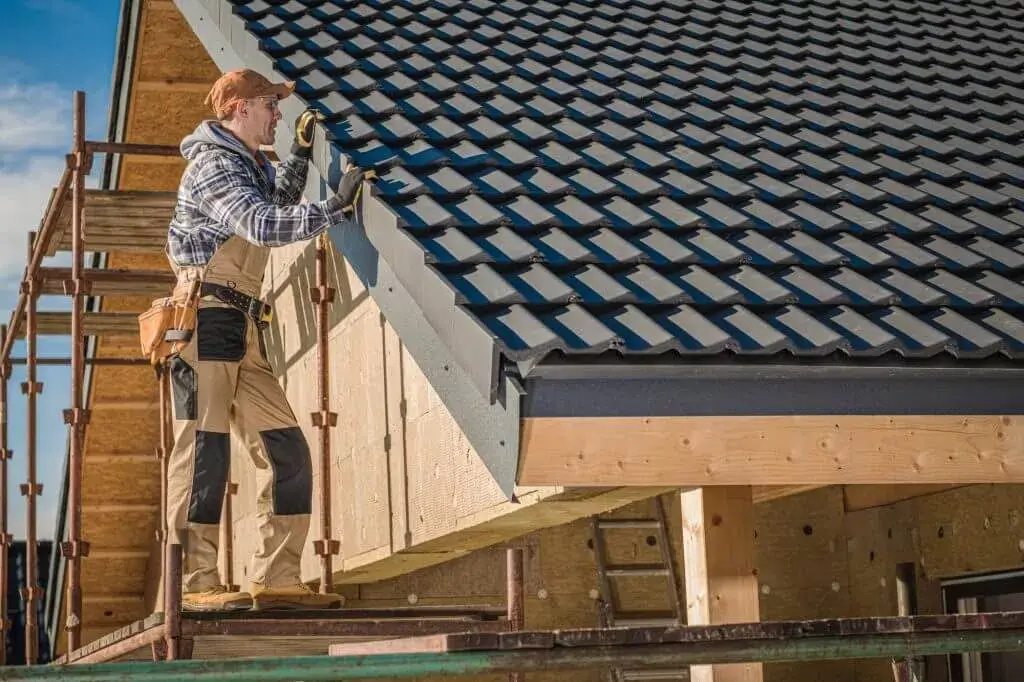The integrity of your roof is critical to protecting your property from weather elements. Roof damage caused by weather can result in costly repairs, impaired structural integrity, and significant interior damage. A common question homeowners have is, what is the best weather to replace a roof? Spring or fall, as it’s not too warm or cold for adequate sealing.
In this blog post, we will discuss the significance of preventing weather-related roof damage and present helpful suggestions and insights for proper roofing maintenance. Above It All Roofing is a top roofing repair company in the GTA to help you maintain a strong roof that can resist various weather situations.
Understanding the Effects of Weather on Your Roof
You may be wondering what factors cause roof damage, as weather impact on the roof is a major one and can contribute to roof weathering. What exactly is roof weathering? Roof weathering can cause damage, as it refers to the slow wearing down and aging of roofing materials over time due to exposure to different weather elements, such as rain, wind, hail, snow, and ice, impacting the integrity of your roof.
Weather impact on the roof can manifest in roofing damage, including the development of leaks, the loss of shingles, cracked tiles, damaged flashing, and compromised structural support. If you are aware of these potential worries, you will be able to address them as soon as possible.
Preventing weather-related roof damage requires proactive maintenance and planning. So, what does roof maintenance include? Regular inspections, seasonal maintenance routines, and preventive measures can help increase your roof’s lifespan.
Seasonal Roof Maintenance
Seasonal roof maintenance is essential for protecting it against weather elements, especially during the winter months. Here is a rundown of maintenance tips for each season
- Spring Roof Maintenance: Spring is an excellent time to remedy winter weather damage. Check for loose or damaged shingles, clear debris, inspect gutters, and ensure sufficient ventilation.
- Summer Roof Maintenance: Prepare your roof for the hot summer months by inspecting seals and flashing and ensuring sufficient attic insulation and ventilation.
- Fall Roof Maintenance: Clean gutters and downspouts, trim overhanging branches, inspect for loose or broken shingles, and address any necessary repairs or maintenance before winter arrives.
- Winter Roof Maintenance: Preventing ice dams, clearing snow accumulation, monitoring for leaks, and ensuring sufficient attic insulation to avoid heat loss are all part of winter roof maintenance.
Protecting Your Roof from Rain and Moisture
There are several ways to protect your roof from rain and moisture, including the following:
- Proper Roof Drainage Systems: Implementing effective roof drainage systems, such as well-maintained gutters and downspouts, is critical to direct rainwater away from your roof and foundation.
 Installing and Maintaining Effective Gutters and Downspouts: Clean and examine gutters and downspouts regularly to ensure they are clear of debris and work correctly to prevent water blockage and damage.
Installing and Maintaining Effective Gutters and Downspouts: Clean and examine gutters and downspouts regularly to ensure they are clear of debris and work correctly to prevent water blockage and damage.- Ensuring Proper Flashing and Seals: To minimize water penetration and potential leaks, maintain and repair flashing and seals around roof openings such as vents and chimneys.
- Promptly Addressing Leaks and Water Infiltration: Monitor your roof for signs of leaks or water infiltration and treat any concerns as soon as possible to prevent further damage to your roof and interior.
Wind and Storm Damage Prevention
High winds can cause severe damage to roofs, such as shingle lifting, blow-offs, and structural compromise. Preventive actions such as strengthening roof structures and securing loose pieces are critical. Keep roofs in good shape by strengthening them to withstand strong winds. Secure loose parts of your roof, like vents and satellite dishes, so they don’t fly off during a storm.
Choosing Wind-Resistant Roofing Materials
When replacing or repairing a roof, choose wind-resistant roofing materials that can withstand the power of high winds. Wind-resistant roofing materials include the following:
- Asphalt Shingles: Look for asphalt shingles with a high wind resistance rating, such as “Class H” or “Class F.” these shingles are reinforced with adhesive strips or specific installation methods to endure heavy winds.
- Metal Roofing: Look for asphalt shingles with a high wind resistance rating, such as “Class H” or “Class F.” These shingles are reinforced with adhesive strips or specific installation methods to endure heavy winds.
- Slate Roofing: Slate roofing is durable and long-lasting. It’s natural composition and interlocking construction make it wind-resistant. To enhance wind resistance, trained professionals must install it.
Taking Precautionary Measures During Severe Storms
It is critical to prioritize safety during severe storms. Stay inside, trim trees to reduce the risk of falling branches, and keep an eye on your roof for visual signs of damage.
Hail Damage and Prevention
Hailstorms can inflict extensive roof damage, including dents, cracks, and granule loss. Understanding the impact of hail aids in the assessment of potential damage and the implementation of preventive measures.
Evaluating Hail-Resistant Roofing Materials
When replacing your roof, consider hail-resistant roofing materials. These materials are intended to withstand hail impact while minimizing damage, including the following:
- Impact-Resistant Asphalt Shingles: Asphalt shingles have extra layers or fiberglass reinforcement to withstand hail impact. They are impact-tested and rated Class 3 or Class 4, with Class 4 being the most impact-resistant.
- Metal Roofing: Metal roofs, such as steel and aluminum roofs, are naturally hail-resistant. Metal panels or shingles can absorb hailstones without cracking. Hail resistance requires heavier metal roofing.
- Slate Roofing: Natural slate is dense and hail-resistant. However, hail resistance depends on slate thickness and durability.
Minimizing Hail Damage Risks
Firstly, you can reduce hail damage risks by investing in hail-resistant roof materials. Sometimes, hailstones may reach your roof easier through overhanging branches. Trim tree branches overhanging your roof to reduce damage to the roof.
You can also invest in protective screens or hail Guards to protect your roof. These screens absorb hailstones, protecting roofing materials.
Regular roof inspections are generally advised to identify any issues with insufficient roofing, defend against hailstorms, and reduce any potential threats to your roof.
Conducting Post-Hail Inspections and Repairs
After a hailstorm, inspect your roof thoroughly to determine the extent of the damage, such as dented or cracked shingles. Address any necessary repairs as soon as possible to prevent future degradation.
Snow and Ice Management
Roof Damage Caused by Heavy Snow and Ice
Does snow impact roofs? Excessive snow and ice buildup can cause roof tension, structural damage, and ice dams. Understanding these consequences aids in developing and implementing successful snow and ice management techniques.
Remove snow from your roof using appropriate tools and techniques, or consider hiring specialists to avoid accidents and damage.
Preventing Ice Dams and Managing Ice Accumulation
Proper insulation, ventilation, and the use of ice and water shields can all assist in preventing ice dams and limiting ice formation on your roof.
Addressing Potential Roof Collapse Risks
In extreme cases, when a lot of snow or ice builds up, the chance of a roof collapsing increases. Be aware of the warning signs and act quickly if you think the structure is at risk.
The Role of Professional Roof Inspections
Benefits of Regular Professional Roof Inspections
Regular expert roof inspections provide several significant advantages to homeowners, including the following:
- Early issue detection
- Accurate roof condition assessment
- Roof lifespan extension
- Saving on costly repairs
Professional roof inspectors are trained to recognize possible problems the common eye may miss. They have the knowledge and experience to detect symptoms of damage, degradation, or weaknesses that could lead to more significant problems in the future. Early detection of problems allows you to address them quickly, avoiding costly repairs or needing a complete roof replacement.
Professional roof inspectors also provide an unbiased review of the condition of your roof. They thoroughly inspect roofs, flashing, seals, gutters, ventilation, and structural components. This complete inspection provides you with a clear picture of your roof’s state and helps you make informed decisions about repairs or maintenance.
Regular inspections and timely repairs can dramatically increase the lifespan of your roof. You may extend the life of your roof and avoid premature replacement by identifying and treating minor issues as they arise. It saves you money in the long run and ensures your home’s long-term protection and performance.
Above It All Roofing provides full-service roof inspections. Schedule an inspection with our professionals to ensure your roof is properly cared for and maintained.
Identifying Potential Issues Early On
Inspections assist in identifying potential concerns early on. Early detection of risks allows for quick repairs, avoiding further damage and costly repairs. Professional roof inspections provide helpful advice on maintenance practices, essential repairs, and assistance in improving your roof’s longevity and performance.
FAQ
How often should I inspect my roof?
It is advised that your roof be inspected at least once a year, especially in the spring or fall and after extreme weather events such as storms or hailstorms.
Can I do roof maintenance and repairs myself?
While you can perform simple roof maintenance activities, it is typically suggested that professionals perform complete inspections. More importantly, for significant repairs to ensure safety and effective completion.
How can I prevent ice dams on my roof?
To avoid ice dams on your roof, establish sufficient insulation and ventilation. You evaluate the insulation of the attic, with adequate heat resistance of R-30-38. Check for good airflow from under the eaves or soffits along the bottom of the roof and out through the roof vents.
What are the signs of roof damage after a storm?
After a storm, roof damage may include missing or damaged shingles, water stains on the ceiling, fractures or dents in the roofing materials, and debris or tree branches on the roof. Professional roof inspections are vital to assess damage and determine repairs.
Conclusion
Roofing is an essential component of any property and must be protected from weather damage. Homeowners may protect their roofs and avoid costly repairs by knowing the effects of weather conditions, performing periodic maintenance, and taking preventive actions. Above It All Roofing is dedicated to helping homeowners maintain resilient roofs and delivering expert services to meet roofing requirements.
Contact Above It All Roofing to schedule a consultation to ensure your roof’s longevity, durability, and protection.







